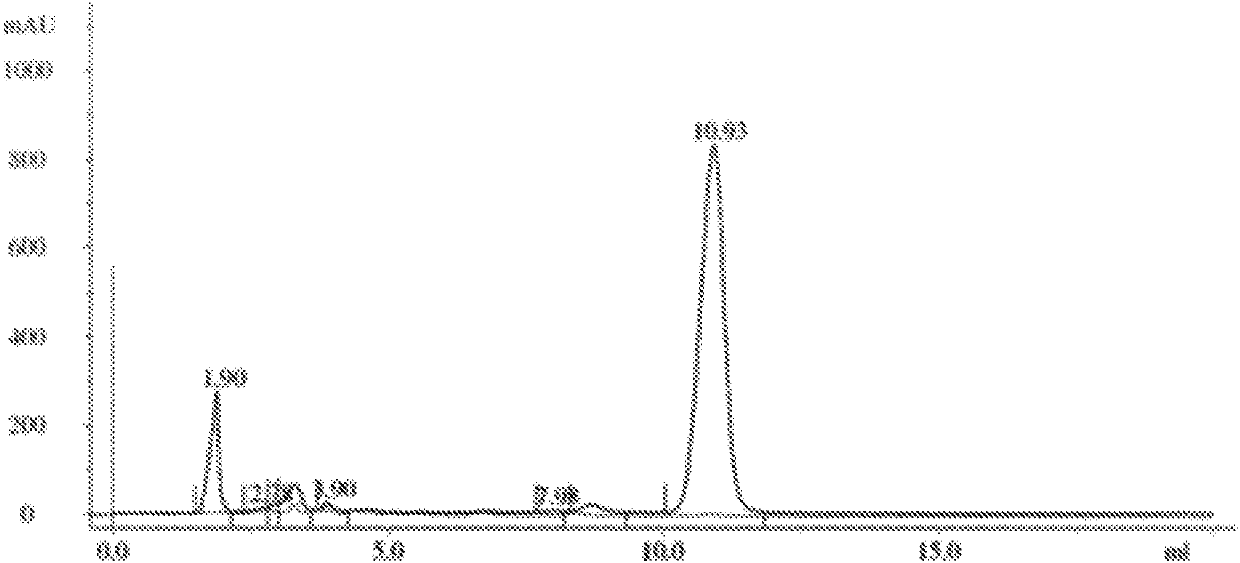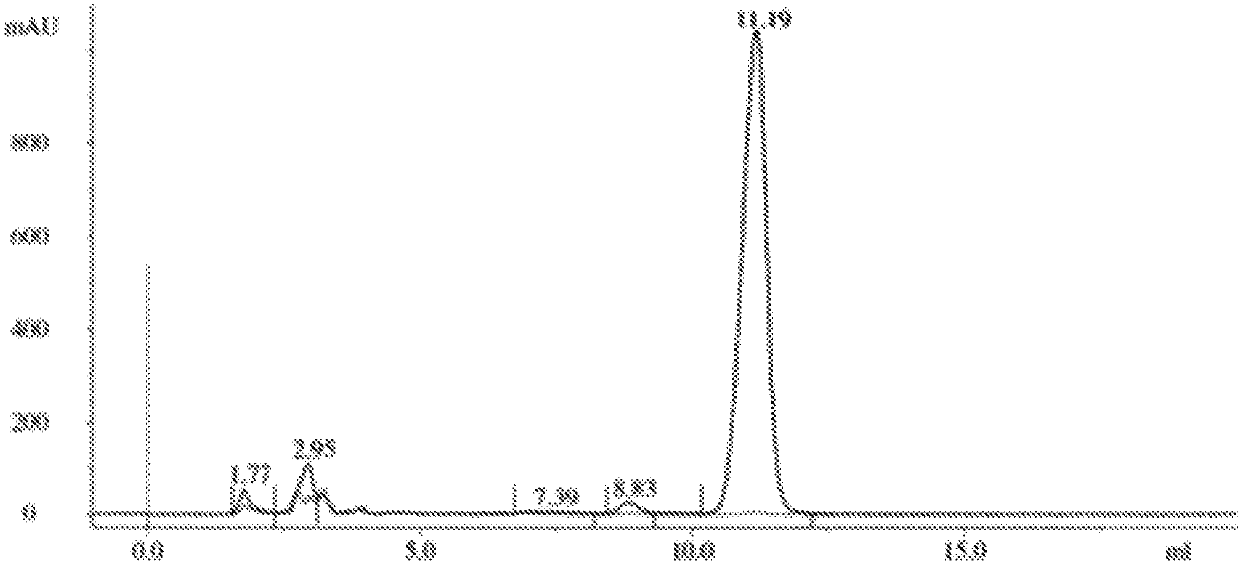Process for preparing supramolecular platinum-based compounds
A platinum compound, precipitate technology, applied in the fields of nanotechnology and cancer treatment, can solve the problem of low biological activity
- Summary
- Abstract
- Description
- Claims
- Application Information
AI Technical Summary
Problems solved by technology
Method used
Image
Examples
Embodiment 1
[0211] Example 1: Schematic of an Exemplary Synthetic Procedure
[0212]
[0213] A similar procedure was used for the synthesis of compounds 25-28 and other lipid-bound platinum compounds. These exemplary procedures work well for all of the compounds described. Introducing additional washing steps helped to increase the purity of compound 26 up to 93% (Table 2).
[0214] Table 2: Yield and Purity of Compounds Prepared Using Embodiments of the Invention
[0215]
[0216] figure 1 shows the HPLC profile of compound 26 before washing with water and acetone, figure 2 The HPLC profile of compound 26 after washing with water and acetone is shown. This is the highest purity achieved by washing.
[0217] Detailed methods for the synthesis of the above exemplary compounds are described in International Patent Application PCT / US2014 / 042339 published as WO / 2014 / 201376, which is incorporated herein by reference.
Embodiment 2
[0218] Embodiment 2: the improved synthetic route of the intermediate 6 of compound 25
[0219] A multi-step synthesis of compound 25 can be found in WO / 2014 / 201376. The reduction in the number of ligand synthesis steps will help improve the yield of compound 25 (API). The referenced procedure involved six steps to reach intermediate 6, whereas the procedure disclosed herein would take two steps to reach the same intermediate. The overall yield of intermediate 6 in the reference procedure (Scheme 2) was 13%. A significant increase (50%) in the yield of intermediate 6 was observed in the new route (Scheme 5).
[0220] Scheme 2: Synthetic steps before compound 25
[0221]
[0222] Scheme 3A. Route 1 for the synthesis of intermediate 6 in fewer steps
[0223]
[0224] Scheme 3B. Route 1B for the synthesis of intermediate 6
[0225]
[0226] Experimental details for Route 1B (Scheme 3B): 2-Bromoethylamine hydrobromide (5.0 g, 25 mmol) was added portionwise to ethyl b...
Embodiment 3
[0243] Embodiment 3: HPLC purification and analysis
[0244] The lipid-bound platinum compounds of the disclosure can then be purified by preparative reverse phase HPLC. The compound can be used on a C18 stationary phase, NH 2 On-column purification of stationary or phenyl stationary phases. Some of the compounds have been found to be unstable on C18, C8, cyano and PFP stationary phases, leading to miscalculations of purity. Therefore, estimates of purity are based on the NH in which the compound has been found to be stable. 2 column or phenyl column.
[0245] Purification on a C18 column involved an isocratic method with a mobile phase comprising 98% methanol and 2% water. Monitor UV absorbance at 210 nm. Compound peaks were collected, pooled and solvent removed by evaporation and lyophilization to obtain >99.5% pure compound in powder form.
[0246] in NH 2 Or purification on a phenyl column involves a gradient method starting with a higher percentage of water and pro...
PUM
| Property | Measurement | Unit |
|---|---|---|
| Average particle size | aaaaa | aaaaa |
Abstract
Description
Claims
Application Information
 Login to View More
Login to View More - R&D
- Intellectual Property
- Life Sciences
- Materials
- Tech Scout
- Unparalleled Data Quality
- Higher Quality Content
- 60% Fewer Hallucinations
Browse by: Latest US Patents, China's latest patents, Technical Efficacy Thesaurus, Application Domain, Technology Topic, Popular Technical Reports.
© 2025 PatSnap. All rights reserved.Legal|Privacy policy|Modern Slavery Act Transparency Statement|Sitemap|About US| Contact US: help@patsnap.com



